Conflict Zones
How the ‘war on terror’ paved the way for student deportations in the US | Conflict News

When Asad Dandia received a message from a young man named Shamiur Rahman in March 2012, he had no reason to suspect that he was under the watchful eye of state surveillance.
Rahman simply seemed interested in deepening his relationship with Islam and getting involved in charity work. As a Muslim community organiser in New York City, Dandia was happy to help.
The young man quickly became a regular at meetings, social events and efforts to help low-income members of the community. Rahman even spent a night in Dandia’s family home.
But nearly seven months later, Rahman made a confession over social media: He was an undercover informant for the New York City Police Department (NYPD).
Dandia ultimately joined a class-action lawsuit, alleging the city of New York singled out Muslim communities for surveillance as part of the wider “war on terror” in the United States.
Four years later, the city settled, agreeing to protections against undue investigations into political and religious activities.
But Dandia sees an echo of his experience in the present-day arrests of pro-Palestinian student protesters from abroad.
He is among the activists and experts who have observed an escalation of the patterns and practices that became core features of the “war on terror” — from unwarranted surveillance to the broad use of executive power.
“What I endured was very similar to what we’re seeing students endure today,” Dandia said.
He noted that a lawyer who represented him is now working on the case of Mahmoud Khalil, a Columbia University student and permanent resident facing deportation for his pro-Palestine activism.
The administration of President Donald Trump has accused Khalil of supporting terrorism, though it has yet to charge him with a crime or release evidence to substantiate the claim.
Dandia said that the belief that Muslim, Arab and immigrant communities are inherently suspect is the common thread between their experiences. “Even if what Trump is attempting now is unprecedented, it’s drawing from longstanding traditions and policies.”
From neighbours to enemies
Scholars and analysts say that one of the throughlines is the pairing of harsher immigration enforcement with rhetoric focused on national security.
The “war on terror” largely began after the attacks on September 11, 2001, one of which targeted New York City.
In the days that followed, the administration of former President George W Bush began detaining scores of immigrants — nearly all of them from Muslim, Arab and South Asian communities — over alleged ties to terrorism.
The American Immigration Council, a Washington-based nonprofit, estimates that 1,200 people were arrested in the initial sweep. Many were ultimately deported.
But the immigration raids did not result in a single conviction on terrorism-related charges. A 2004 report by the American Civil Liberties Union (ACLU) noted that the government nevertheless advertised the deportations as “linked to the September 11 investigation”.
“Almost immediately after 9/11, Muslim communities were treated not as fellow New Yorkers who were living through the trauma of an attack on their city, but as potential accessories, witnesses, or perpetrators of a follow-on attack,” said Spencer Ackerman, a reporter who covered the war on terror and is the author of the book Reign of Terror.
The ACLU report says that some of those detained were held in solitary confinement and only allowed to leave their cells with shackles on their hands and legs. Some were kept in detention long after the government cleared them of any wrongdoing.
Fear in ‘the homeland’
Nikhil Singh, a history professor at New York University, believes that period of heightened fear caused the US to look inward for enemies, among its own communities.
“The argument that the US was fighting these non-state groups who didn’t have borders started to imply that the fight against those enemies could take place anywhere, including in what the Bush administration started to call ‘the homeland’,” said Singh.
He pointed out that those post-September 11 detentions exercised a broad view of executive power, in order to justify a lack of due process for alleged terror suspects.
“A lot of what’s happening now can be traced back to this moment, where this argument became normalised that the executive is responsible for keeping the country safe and, for that reason, needs to be able to suspend basic rights and ignore constitutional restraints.”
Art Eisenberg, executive counsel at the New York branch of the ACLU, explained that the history of targeting immigrant communities for national security concerns stretches beyond the “war on terror”.
“The origins of policing and surveillance and undercover work targeting immigrant groups goes all the way back to the beginning of the 20th century. The New York City police intelligence bureau used to be called the Red Squad, but earlier it had been called ‘the Italian squad’,” said Eisenberg.
Over time, those operations morphed to target new sources of potential dissent: communists, civil rights activists and the Black Panthers, among others.
But he added that the “war on terror” marked an escalation of that targeting. And those types of actions can have lasting effects on communities.
The ACLU notes that, in the years after the September 11 attacks, more than one-third of Pakistanis in a Brooklyn neighbourhood known as “Little Pakistan” were deported or chose to leave the area.
Later, in 2012, when it was revealed that authorities had been spying on Dandia’s organisation, donations started to dry up, and the mosque where they held meetings told them to meet outside instead.
No one had been charged with a crime. But the chilling effect of the surveillance caused the organisation to eventually close its doors, according to Dandia.
“People always ask this question: If you’re not doing anything wrong, why should you worry?” said Dandia. “But it’s the government that is deciding what is right and wrong.”
Escalating attacks
Under the Trump administration, critics say vague allegations of terrorism continue to be seized upon as a pretext to silence dissent.
In a statement about Khalil’s arrest, the Department of Homeland Security claimed that his involvement in campus protests against Israel’s war on Gaza showed he was “aligned” with the Palestinian armed group Hamas.
On Wednesday, masked federal agents also grabbed a 30-year-old Turkish graduate student named Rumeysa Ozturk off the street near Tufts University and took her away as she was on her way to dinner.
In that case, the Department of Homeland Security likewise accused Ozturk of taking part in activities “in support of Hamas”, without offering details.
The US has designated Hamas a foreign terrorist organisation since 1997. US law prohibits citizens and residents from providing “material support” to such organisations.
But Samuel Moyn, a professor of law and history at Yale University, said the recent arrests have failed to meet that threshold.
“The scary thing is that they have dropped the pretence of even accusing people of material support for terrorism,” Moyn told Al Jazeera. “They are relying on a claim that these views are at odds with US foreign policy.”
Singh pointed out that the seemingly arbitrary detentions allow Trump to draw on the legacy of the “war on terror”, while he pursues his own aims, including a crackdown on immigration.
“It’s the immigration agenda intersecting with the war on terror,” said Singh. “The former involves slowly chipping away at traditional constitutional rights, while the latter gives you a framework of broad presidential power.”
If left unchecked, Ackerman said that an expansive view of presidential power could pave the way for further human rights abuses, even beyond immigrant communities.
“If there’s never any accountability for institutionalised abuses, those abuses will continue and they will intensify,” he said. “That is the lesson not just of the war on terror, but of a lot of noxious human history.”
“If the Trump administration can say that what you say, what you post on social media, what you put on a placard, redounds to the benefit of a terror entity, then there really is nothing you can do to protect your freedom to say things that people in power disapprove of,” he added.
Conflict Zones
Trump says he thinks Iran wants direct talks with US | Donald Trump News
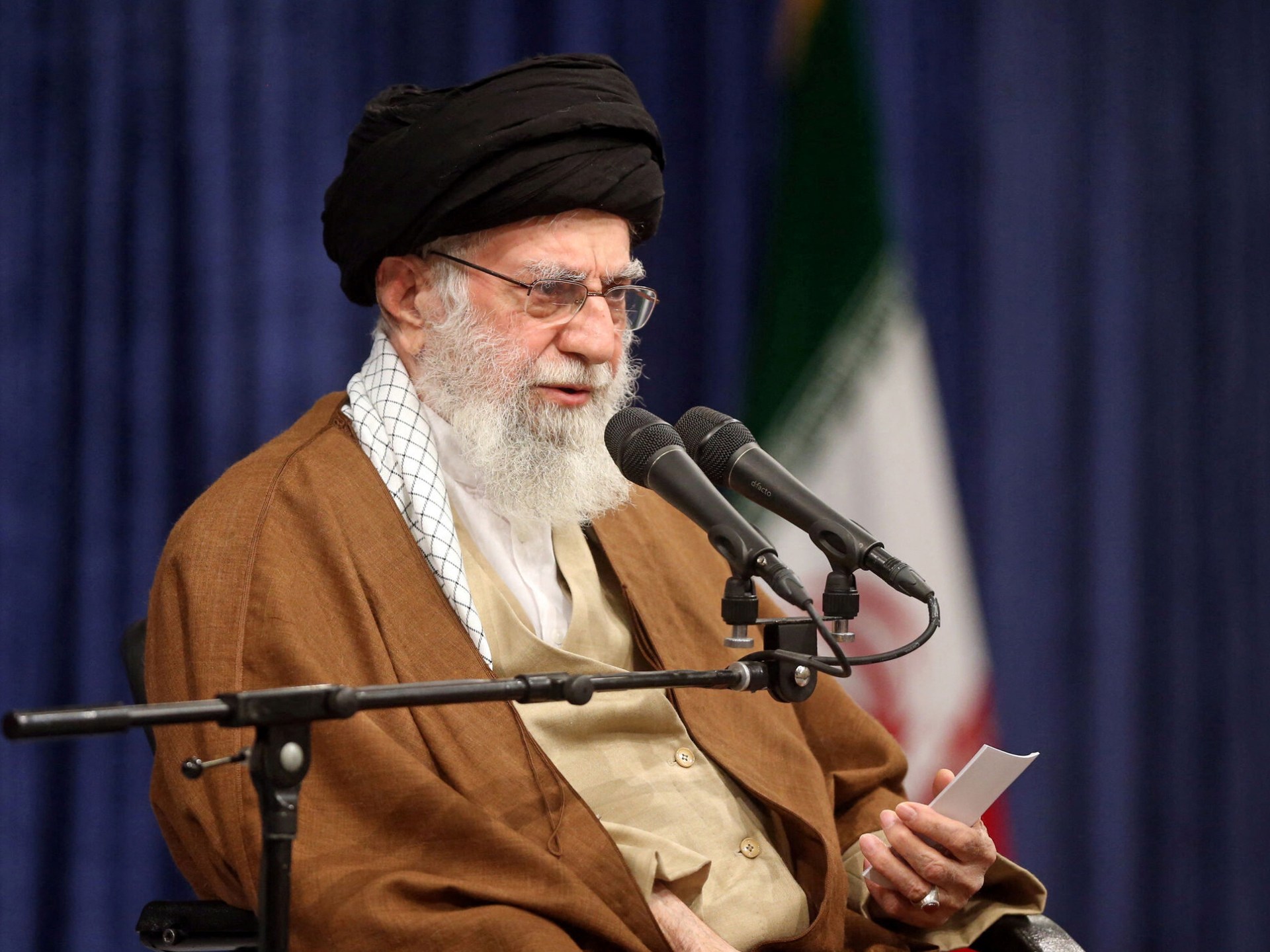
US president says Iran initially wanted talks through intermediaries, but he thinks Tehran has changed its position.
Washington, DC – Donald Trump has suggested that Iran may agree to direct talks with the United States despite the intensifying tensions and back-and-forth threats between the two countries.
Speaking to reporters on Thursday, the US president appeared optimistic about the prospect of face-to-face diplomacy with Tehran.
“I think it’s better if we have direct talks,” he said. “I think it goes faster, and you understand the other side a lot better than if you go through intermediaries. They wanted to use intermediaries. I don’t think that’s necessarily true any more.”
Last month, Trump sent a letter to the Iranian leadership calling for negotiations to address Iran’s nuclear programme. The US president has also been regularly threatening Iran with military strikes.
Tehran has rejected the prospect of direct talks with Washington but said it is open to indirect diplomacy.
It is not clear whether Iran has indeed changed its stance or if Trump is speculating about Tehran’s position.
The US administration has been piling up sanctions against Iran with the aim of completely choking off the country’s oil exports – particularly to China.
In 2018, during his first term as president, Trump nixed a multilateral deal that saw Iran scale back its nuclear programme in exchange for the lifting of international sanctions against its economy.
Tehran maintains that it is not seeking a nuclear weapon. Israel, the top US ally in the region, is widely believed to have an undeclared nuclear arsenal.
Since returning to office in January, Trump has promised to bring “peace” to global conflicts – though he has addressed Iran with a mix of public diplomatic overtures and bombastic warnings.
“If they don’t make a deal, there will be bombing,” he said last week.
Iranian officials have responded with their own threats, suggesting that, if the country is attacked, it will strike back against US troops and interests in the Middle East.
“The US must know that, when facing Iran, threats will never achieve anything,” Iranian Supreme Leader Ayatollah Ali Khamenei said last month, according to Iran’s Tasnim News Agency.
“The US and others must know that, if they commit any malicious act against the Iranian nation, they will receive a severe blow.”
But Tehran’s position in the region appears to have weakened amid the ongoing war in Gaza and beyond.
Israel, for example, killed the top political and military leadership of Lebanon’s Hezbollah, Iran’s once-fearsome ally. Iran lost another key partner after armed opposition groups toppled Syrian President Bashar al-Assad in December of last year.
“I think they’re concerned, I think they feel vulnerable, and I don’t want them to feel that way,” Trump said on Thursday, referring to Iran.
Conflict Zones
Russia-Ukraine war: List of key events, day 1,134 | Russia-Ukraine war News
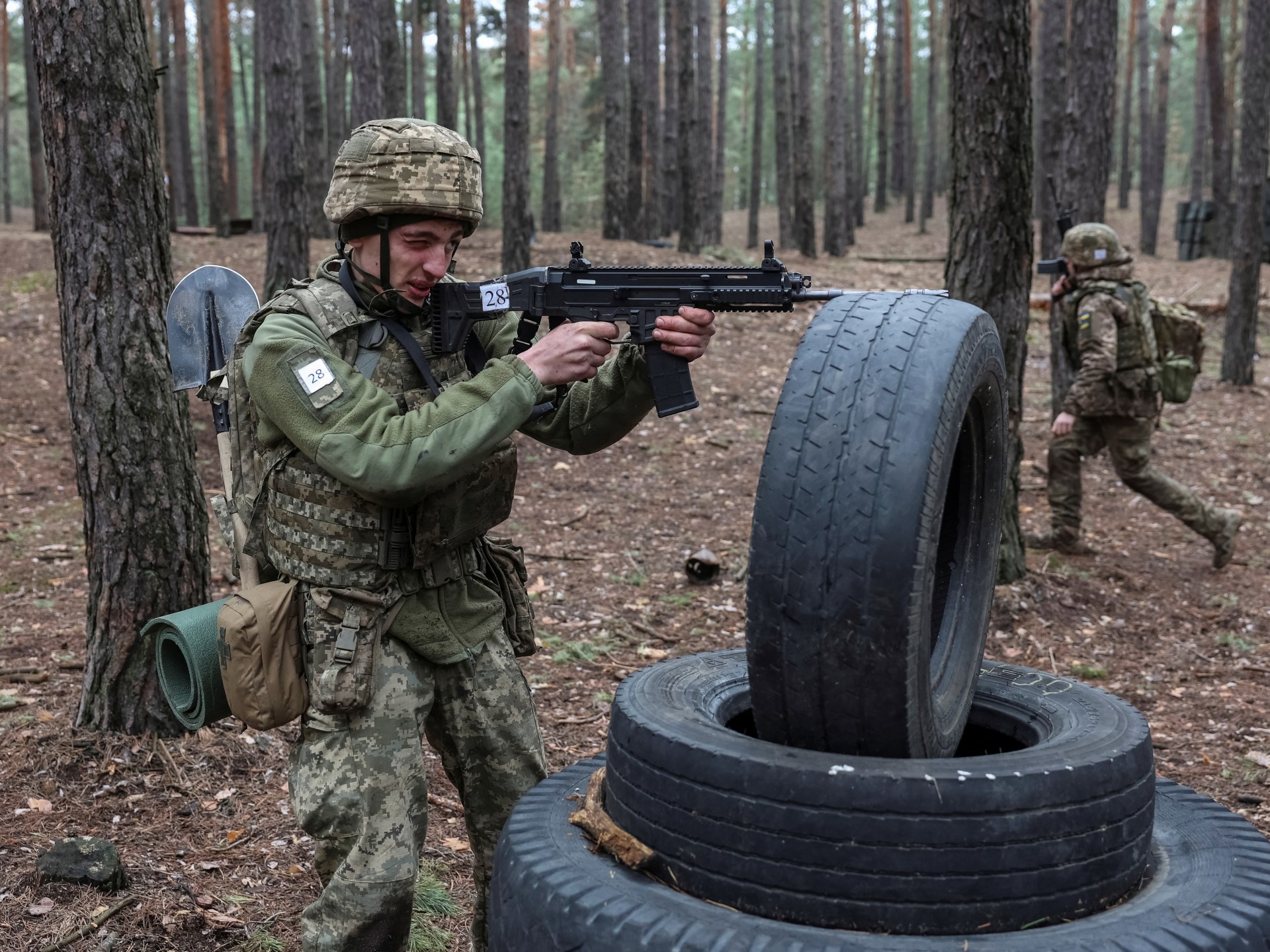
These are the key events on day 1,134 of Russia’s war on Ukraine.
These are the key events from Wednesday, April 2:
Fighting
One person was killed and two others injured in a Russian overnight attack on southeast Ukraine’s Zaporizhia region, Regional Governor Ivan Fedorov said.
A Russian ballistic missile strike on Ukraine’s Kryvyi Rih killed at least four people and injured 14 others, including two children, Ukrainian authorities said.
An infant, a seven-year-old boy and six others were also injured in a drone attack on Ukraine’s Kharkiv region, said Oleh Syniehubov, the region’s governor. Kharkiv’s Mayor Ihor Terekhov said 15 drone strikes were carried out in the region.
At least 60 people were forced to evacuate from their homes in the Russian city of Kursk after falling debris from intercepted Ukrainian drones hit their apartment buildings, acting governor, Alexander Khinshtein, said.
Russia’s state news agencies TASS and RIA Novosti report that Russian forces destroyed 93 Ukrainian drones overnight, most of which were destroyed over the Kursk region.
The Ukrainian air force said it shot down 41 of 74 Russian drones launched towards Ukraine overnight. Another 20 drones failed to reach their targets due to electronic jamming measures, the air force said.
Ukrainian President Volodymyr Zelenskyy said nearly 4,000 people were left without electricity after a Russian drone hit a substation in Ukraine’s northeastern Sumy region, and artillery fire damaged a power line in the central Dnipropetrovsk region.
Moscow’s Ministry of Defence also accused Kyiv of hitting Russian energy facilities twice in the past 24 hours despite a mutual moratorium on energy strikes brokered by the United States.
Germany’s Deutsche Presse-Agentur (DPA) news agency reported that Russia had destroyed one of its own dams in the Belgorod border region using an aerial bomb. The reason for the dam’s destruction was not given.
Oil and Gas
Russia said it ordered the closure of the Black Sea port terminal handling Kazakhstan’s oil exports and US giants Chevron and Exxon Mobil, after two inspections on moorings for vessels at the terminals.
Ceasefire
Russia and Ukraine accused each other of breaching the US-brokered moratorium on energy strikes after both countries reported damage to energy facilities due to alleged violations by both sides.
Politics and Diplomacy
Eleven Ukrainian children were returned to Kyiv from Russia and Russian-occupied Ukraine under the Bring Kids Back UA initiative, President Zelenskyy’s chief of staff, Andriy Yermak, said.
The Kremlin said it is “possible” that Russian envoy Kirill Dmitriev will visit the US and said contact with Washington was ongoing. The Reuters news agency reported that Dmitriev is expected in Washington this week for talks with US President Donald Trump’s administration.
Conflict Zones
‘Live-fire drills’: China conducts second day of war games around Taiwan | Border Disputes News
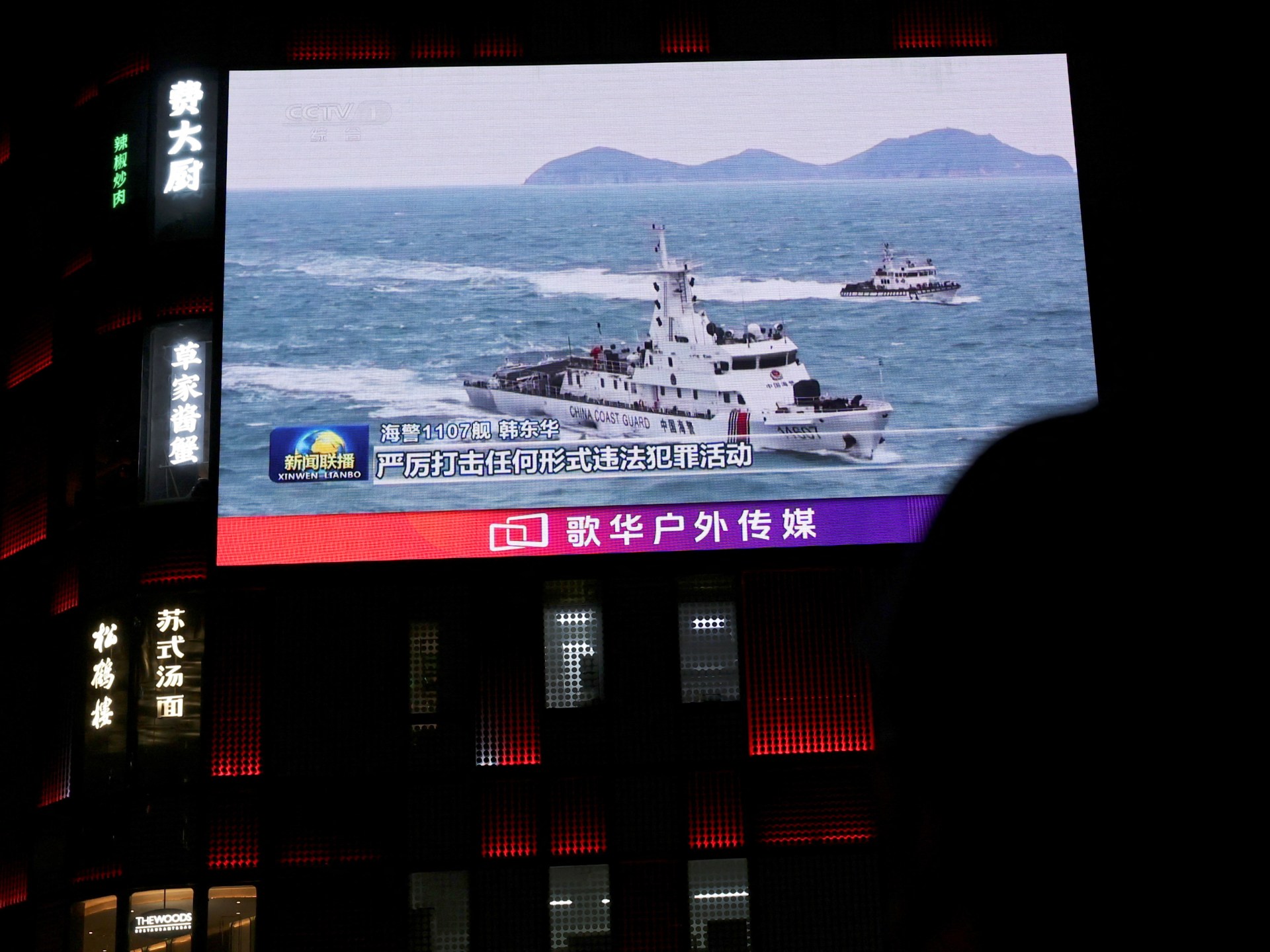
China continues a second day of war games and military drills around Taiwan, including simulated attacks on key targets.
China’s military said it has simulated attacks on high-value targets in Taiwan, including ports and energy facilities, as it carried out “live-fire” military drills around the self-ruled island on the second day of war-game exercises.
The drills on Wednesday, part of an operation titled “Strait Thunder-2025A”, were conducted in the middle and southern parts of the Taiwan Strait as well as the East China Sea, the military said.
“Long-range live-fire drills” were carried out in order to practise hitting “simulated targets of key ports and energy facilities” during the exercises, the military said.
The aim was to “test the troops’ capabilities” in areas such as “blockade and control, and precision strikes on key targets”, said Senior Colonel Shi Yi, spokesman of the Chinese military’s Eastern Theatre Command.
China’s Shandong aircraft carrier was also deployed in the drills, testing the ability to “blockade” Taiwan by integrating naval and air power, the Eastern Theatre Command said.
China’s military published a video of what it said were the live-fire drills that showed rockets, rather than ballistic missiles, being launched and hitting targets on land, and an animation of explosions over Taiwanese cities including Tainan, Hualien and Taichung, all home to military bases and ports.

Taiwan’s President William Lai Ching-te condemned the drills while the island’s defence ministry said China had deployed 21 warships around the island, including the Shandong carrier group, and 71 aircraft and four coastguard vessels on Tuesday.
“China’s blatant military provocations not only threaten peace in the #Taiwan Strait but also undermine security in the entire region, as evidenced by drills near Australia, New Zealand, Japan, Korea, the Philippines & the SCS [South China Sea]. We strongly condemn China’s escalatory behaviour,” Taiwan’s Presidential Office said in a post on X.
On Wednesday, Taiwan said that 76 Chinese military aircraft and 19 naval or government ships had entered waters and airspace near the island over the previous 24 hours, with 37 of the planes crossing the centre line in the 160-kilometre (110-mile) wide Taiwan Strait that forms an unofficial border with mainland China, but which Beijing refuses to acknowledge.
The Shandong aircraft carrier group had also entered Taiwan’s air defence identification zone, a self-defined security area tracked by the Taiwanese military.
Al Jazeera’s Katrina Yu, reporting from Beijing, said the exercises were not the first conducted by China around Taiwan but these latest drills “show how serious Beijing is about honing their capability to blockade the island of Taiwan should they deem necessary”.
“Beijing sees Taiwan, the democratic ruled island, as a breakaway Chinese province, and President Xi Jinping has said time and time again, that whether by peaceful means or by force, it will be unified again with mainland China,” Yu said.
“Taiwanese leader Lai Ching-te has condemned the drills. He says, this is only demonstrating that China is a troublemaker in this region,” Yu added.
The drills are expected to continue until Thursday night and China’s Maritime Safety Administration has announced that an area off the northern part of the eastern province of Zhejiang, more than 500km (310 miles) from Taiwan, will be closed for shipping due to military operations.
-
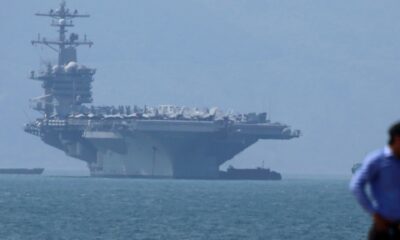
 Conflict Zones2 days ago
Conflict Zones2 days agoUS attacks kill 4 in Yemen as second aircraft carrier sent to Middle East | Military News
-

 Lifestyle2 days ago
Lifestyle2 days agoCooking with kids teaches healthy eating and more
-

 Europe2 days ago
Europe2 days agoAlex Ovechkin: A leap year ploy could have altered hockey history as Capitals captain closes in on Wayne Gretzky’s ‘unreachable’ goal record
-
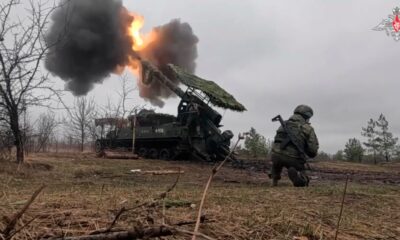
 Conflict Zones2 days ago
Conflict Zones2 days agoRussia-Ukraine war: List of key events, day 1,133 | Russia-Ukraine war News
-

 Education1 day ago
Education1 day agoNashville school shooter sought fame in 2023 attack that left 6 dead, report finds
-

 Europe1 day ago
Europe1 day agoLive updates: Trump announces sweeping new tariffs on imports on ‘Liberation Day’
-
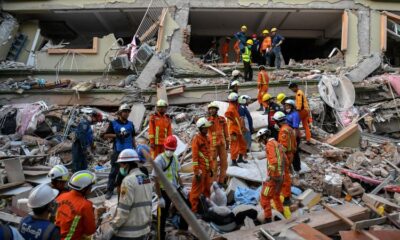
 Asia1 day ago
Asia1 day agoMyanmar’s military government announces temporary ceasefire to aid quake efforts
-

 Sports1 day ago
Sports1 day agoDaria Kasatkina: Russian-born tennis player ‘didn’t have much choice’ over switching allegiances to Australia




